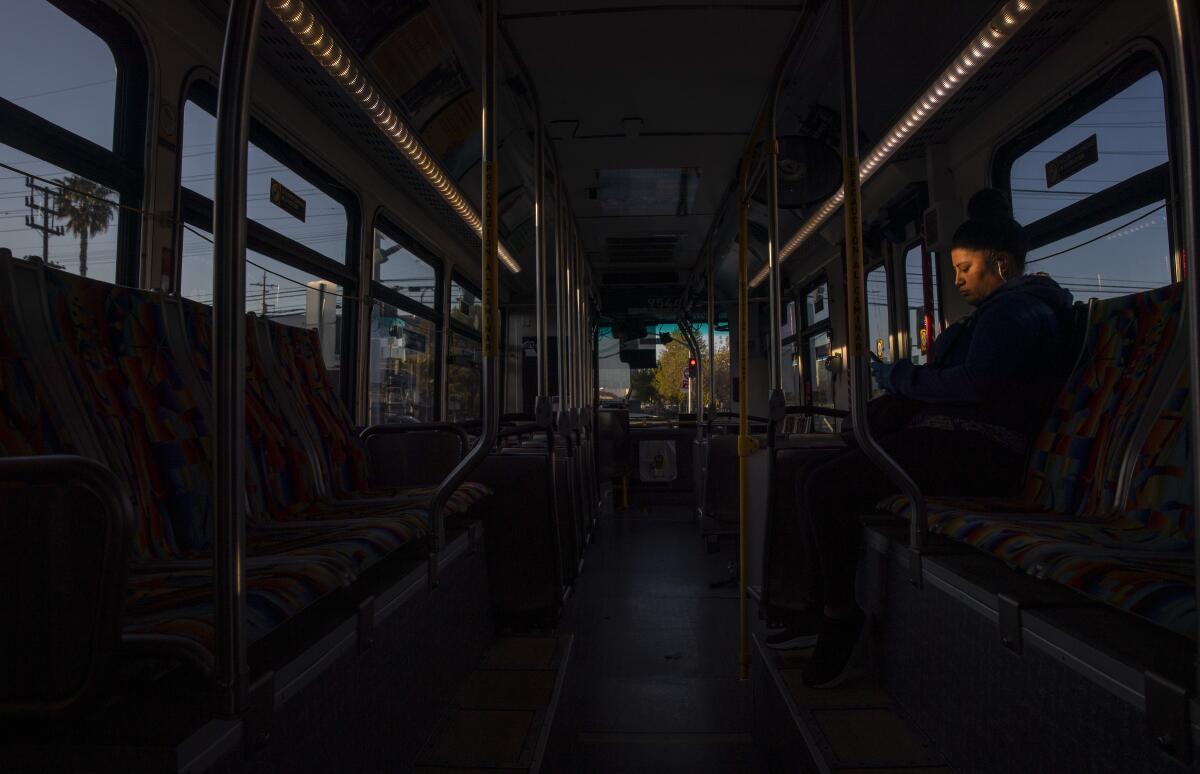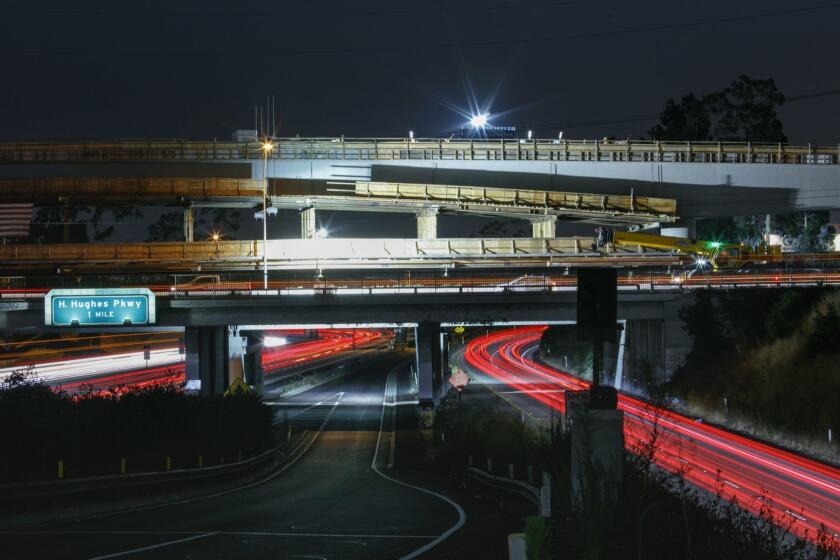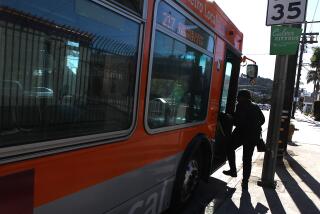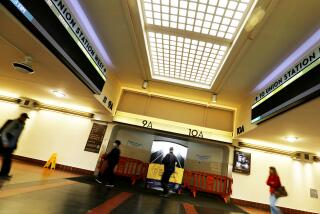Coronavirus forces deep cuts to L.A. Metro bus and rail service

Facing precipitous drops in tax revenue and transit ridership, Los Angeles County’s busiest transit agency will make major cuts to bus and rail service starting Sunday.
The Metropolitan Transportation Authority’s scaled-back service plan will resemble the agency’s usual Sunday schedule, meaning passengers may face longer waits between buses and trains than they usually would on weekdays.
The cuts are the equivalent of a 29% annual reduction in bus service and a 14% reduction in rail service, officials said.
Most rail lines will run every 12 minutes between 6 a.m. and 6 p.m. and every 20 minutes at other times. The last train of the night will start its run around midnight, officials said.
Most bus lines will operate on a Sunday schedule during the week. Metro will also operate 15 Metro Rapid lines and 22 local lines during the week. Both weekend days will operate on a normal Sunday schedule, officials said. Full details are available on Metro’s website.
Metro’s ridership has plummeted since the start of the pandemic, with bus ridership falling 65% and rail ridership down 75%, officials said.
Officials said they may also close some entrances to seven subway stations where riders can enter from multiple locations, including Union Station, 7th Street/Metro Center and Universal City. That will reduce the number of surfaces that people touch, which will reduce the need for janitors and cleaning supplies, Metro said.
The 8.5-mile line through Inglewood, Leimert Park, Hyde Park and other areas is about 95% complete. But construction won’t finish until the end of 2020 or early 2021 because crews are fixing problems and redoing work, Metro said.
Metro may lose $700 million in local and state sales tax revenue and at least $11 million a month in lost fare revenue, and the cost for labor and materials needed to clean the system more thoroughly could be at least $35 million, Chief Executive Phil Washington told members of the county’s congressional delegation in a letter.
Transit advocates voiced concern Thursday that the cuts could leave Metro’s remaining buses too crowded, violating the guidance from public health officials that people practice physical distancing and stay six feet away from one another in public.
In an email sent to Metro directors, the Alliance for Community Transit-Los Angeles asked Metro’s operations staff to closely monitor the system to identify “any lines where social distancing is not possible due to level of use,” adding,
“Social distancing is not a privilege that all L.A. residents have.”
During a public meeting held by phone Thursday, Metro Deputy Executive Officer Conan Cheung said the agency had analyzed “every trip, every stop, of every line” during March to ensure that the new service plan would address demand where it still exists.
Under the new plan, most 40-foot buses — which can seat 36 to 40 people — will have 15 or fewer riders on board, he said.
“If there are routes which start to pick up more people, and we want to put a little more service out, we’ll be able to do that on a day-to-day basis,” said Chief Operating Officer Jim Gallagher.
Metro has asked passengers to wear homemade masks or face coverings. Riders have also been asked to board through the rear doors rather than the front door, where the fare box is located.
During the phone meeting, Washington said Metro is not checking fares, but he balked at describing the system as free. Even if riders are not going to the fare box when they board the bus, they should still carry the proper fare, he said.
Declaring the Metro system free could have “unintended consequences with regards to big crowds on our buses, and people just riding around for free,” he said. “It flies in the face of social distancing.”
The cuts mirror decisions by transit agencies in other major cities, where stay-at-home orders have decimated ridership. The Washington, D.C., Metro system has closed 19 stations indefinitely. San Francisco slashed its city bus lines from 68 to 17.
The $2-trillion stimulus bill that Congress approved last month includes $25 billion in emergency grants for public transit agencies, of which the Greater Los Angeles region will receive almost $1.22 billion.
As of Thursday at noon, Metro had reported 29 cases of COVID-19 among employees, contractors and vendors.
More to Read
Start your day right
Sign up for Essential California for news, features and recommendations from the L.A. Times and beyond in your inbox six days a week.
You may occasionally receive promotional content from the Los Angeles Times.









